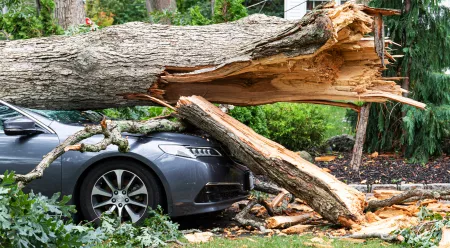Wondering who can drive your car under your insurance in Ontario? The short answer is, “anyone with a valid license and your permission.” The longer answer, however, reveals many nuances you need to be aware of before handing your keys over. Keep reading to learn more.
Who Can Drive My Car Under My Insurance in Ontario?
A standard car insurance policy in Ontario has no clause preventing you from letting someone else drive your car every once in a while.
As long as that individual has your explicit permission, is not an excluded driver on your policy, and is licensed to use the vehicle as intended, your insurance provider will cover any claim resulting from an accident while they’re behind the wheel. They do not need to have insurance of their own.
Keep in mind that Ontario has a graduated licensing system. At certain levels, drivers have restrictions on what they can do. Someone with a G1, for example, can’t:
- drive unless a fully-licensed driver with at least four years of experience is present and has a blood-alcohol level less than .05 (it has to be zero if the supervisor is 21 and under)
- drive on 400-series highways
- drive between midnight and 5 a.m.
If you loaned your car to a G1 driver who broke any of these rules, resulting in an accident, your coverage would be at risk. It’s not just G1 drivers that have restrictions, either. Read information about restrictions imposed on G2 drivers.
Beyond licensing violations, the same rule applies to any other scenario in which your vehicle is operated in a way that contradicts the law; a claim would likely be denied.
The Difference Between Occasional and Secondary Drivers
Here’s another very important thing to note. While insurers won’t take issue with someone borrowing your car occasionally, letting them do so on a regular basis is a different story entirely.
In this scenario, you’d need to list them as a secondary driver on your insurance policy. Your provider will review this person’s driving record and may charge an additional premium based on the level of risk involved with covering them.
Secondary driver insurance rules in Ontario are quite strict. You don’t want to flout them. If someone gets into an accident with your vehicle and your insurance provider determines they should have been listed as a secondary driver but weren’t, your claim could be denied.
Think of it this way. Your insurance premium is a reflection of the risk associated with covering all primary and secondary drivers on your policy. If you provide incomplete information regarding who uses your vehicle regularly, your premium may fall short of what’s required to cover the actual risk. Note that there's no such thing as temporary car insurance for someone who wants to borrow your car. Any claims are ultimately handled through your primary policy.
Driving Someone Else’s Car in Ontario: Who’s Coverage Applies?
Let’s say you have your own vehicle with an accompanying insurance policy but find yourself borrowing someone else’s car. In the event of an accident, which policy provides coverage? Generally speaking, it will be the policy attached to that vehicle. In other words, whoever owns the car would have to contact their insurance provider and file a claim.
However, it’s possible to extend your insurance policy so it covers other vehicles you may drive. This is known as non-owner coverage or OPCF 27. You’ll need to purchase it as an add-on to your policy. While this is an added monthly cost, there are many benefits for those who rent or borrow vehicles regularly.
For one, you’ll avoid having to purchase costly insurance at the rental desk. If you’re involved in an accident while driving someone else’s vehicle and the claim exceeds their coverage, your non-owner endorsement can also kick in to help.
This is why non-owner coverage is so popular among people who rent or borrow vehicles often.
How Fault Works When Driving Someone Else’s Car in Ontario
Let’s say you’re driving someone else’s car in Ontario and cause an accident. Who takes the hit to their insurance record?
Whoever’s insurance policy covers the claim, that’s who. Typically, this will be the vehicle’s owner. They’ll end up with an at-fault accident on their insurance record and may see their premiums increase.
This is why it’s smart to be cautious about lending your vehicle out regularly. Accidents happen and you may be held responsible even if you weren’t behind the wheel. A single at-fault accident can increase your premiums dramatically. In addition, we would recommend also reading up on traffic tickets that raise insurance rates to be aware of.
When in Doubt, Ask Your Insurance Provider
As you can see, there are many nuances associated with letting other people drive your car. If you’re unsure whether a certain situation would jeopardize your coverage, don’t hesitate to contact your provider.
It’s not uncommon for accidents to cause several thousand dollars in damage. Because Ontario has a no-fault insurance system, every driver involved in an accident files a claim with their own provider. In other words, you need to follow your insurance company’s rules very carefully to avoid any issues with a claim should someone borrow your vehicle and get into an accident.
Trust Surex for the Best Rates on Car Insurance in Ontario
Surex helps drivers secure the best rates on car insurance in Ontario. We compare quotes from several insurers and match you with the best offer. Learn more about how Surex works and start a quote today. You can also get quotes depending on which city you live in, so feel free to check out car insurance in Mississauga, Ontario, car insurance in Oakville & Burlington, Ontario, car insurance in Scarborough, Ontario, or car insurance in Markham, Ontario.
Our agents can help you find the right coverage based on your needs, such as if you frequently lend your car out.
Frequently Asked Questions
Can you drive someone else’s car without insurance in Ontario?
As long as you’re licensed to drive in Ontario, you can operate someone else’s vehicle even if you don’t have insurance of your own. You must receive their explicit permission to operate the vehicle, however. Simply knowing they wouldn’t mind is not enough.
Additionally, if you plan on driving this person’s car regularly, you need to follow secondary driver insurance rules in Ontario. This means being listed as a secondary driver on the vehicle’s insurance policy.
Does everyone in your household have to be on your car insurance?
Generally, all licensed drivers will be listed as secondary drivers under your insurance policy. The rationale is that people living in the same household likely use each other’s vehicles somewhat regularly.
If you don’t want someone in your household listed as a secondary driver, contact your insurance provider. You can also have them listed as an excluded driver on your policy, which removes them from any calculation of risk associated with your policy. Consequently, if you let them drive your vehicle anyway and an accident occurs, your provider will deny the claim.
Do I have to list all drivers on my insurance?
If someone drives your vehicle regularly, you’ll need to list them as a secondary driver on your insurance policy. Insurance companies have different definitions of “regularly,” however. Some describe a driver who uses your vehicle twice monthly as regular. Contact your insurance provider for specifics.
What if an unlicensed driver crashed my car?
If an unlicensed driver crashes your car, your insurance company will deny the claim. This is true whether you gave the driver permission to use your vehicle or not.



